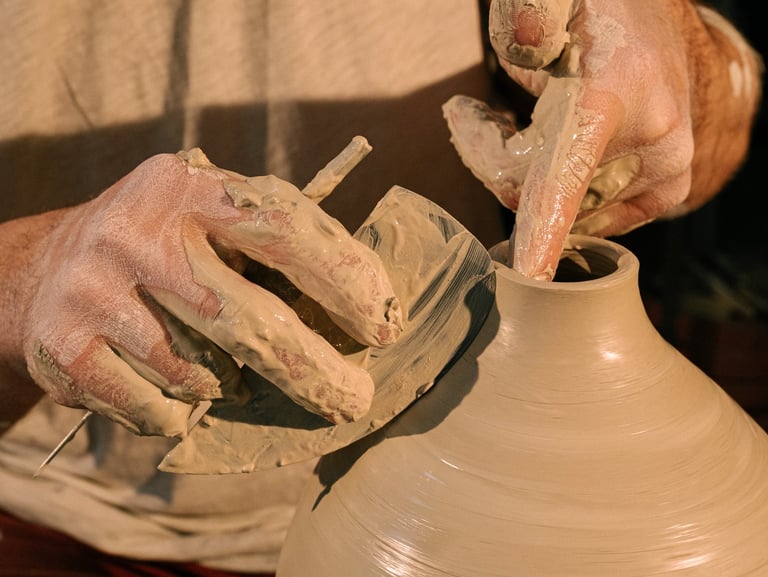From Clay to Art: A Journey Through the History of Pottery
ART
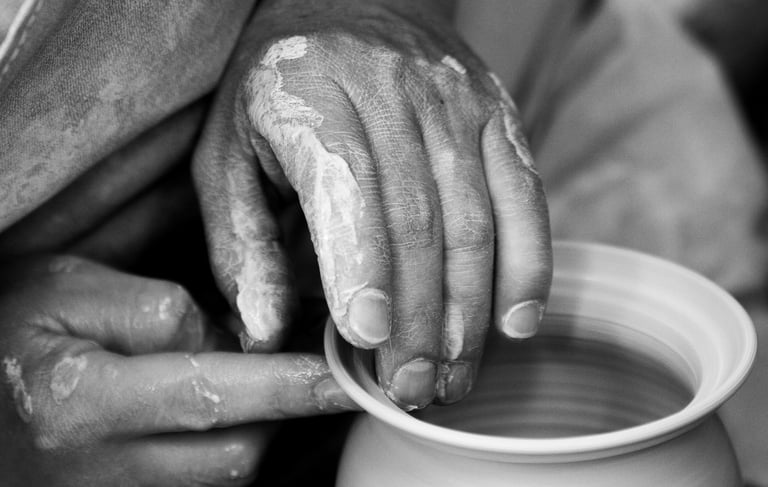

Pottery, the ancient art of shaping clay into vessels and objects through skilled craftsmanship, stands as a testament to humanity's ingenuity and creative spirit. Spanning millennia, its history weaves a compelling narrative of cultural evolution and artistic expression. From humble beginnings in prehistoric times to the sophisticated ceramic artistry of contemporary masters, pottery has left an indelible mark on the tapestry of human civilization. Its significance transcends mere functionality, as it bears witness to our ancestors' endeavors, beliefs, and aspirations. This article embarks on a captivating journey through the annals of pottery, uncovering the secrets and stories behind these clay-born creations. With each era, we will explore the innovations, techniques, and cultural contexts that have shaped pottery into the diverse and cherished art form it is today. Through the following sections, we'll delve into the prehistoric origins, the flourishing civilizations of Mesopotamia, Egypt, and Greece, the exchange of techniques along the Silk Road, the Renaissance revival, the industrial revolution's impact, and the dynamic world of contemporary pottery. Each chapter unveils a new layer of this fascinating history, illustrating how pottery transcends time and continues to captivate the imagination of artists and enthusiasts worldwide.
Prehistoric Pottery (10,000 BCE - 3,000 BCE)
Prehistoric pottery marks the earliest known attempts at crafting vessels from clay. Around 10,000 BCE, during the Neolithic period, humans in various parts of the world began to experiment with shaping clay into functional containers. Notable among these early examples is the Jomon pottery of ancient Japan. The Jomon people utilized a coiling technique, where long ropes of clay were layered on top of each other and then smoothed together to create vessels with intricate patterns and textures.
As time progressed, prehistoric potters refined their techniques. They began using pinching methods to shape pots and later incorporated slab-building, allowing for more varied forms. What initially served as purely utilitarian items gradually evolved into expressions of artistic creativity. Decorative elements, including incised designs and pigment applications, became prevalent, showcasing the early human fascination with aesthetics.
Ancient Civilizations and Pottery (3,000 BCE - 500 CE)
A. Mesopotamia (3,000 BCE - 500 BCE)
In the cradle of civilization, Mesopotamia, pottery assumed a crucial role in daily life. Sumerian, Akkadian, and Assyrian potters demonstrated remarkable skill in creating a diverse range of pottery styles. Intricately decorated vessels, often depicting scenes from daily life or religious ceremonies, became common. Mesopotamian potters also played a pivotal role in the development of kiln technology, allowing for more precise control over firing processes. Glazes, initially used for utilitarian purposes, began to be employed for their aesthetic appeal.
Trade and commerce in Mesopotamia relied heavily on pottery. The region's strategic location between Asia, Africa, and Europe facilitated the exchange of pottery techniques, styles, and finished products, influencing pottery production in neighboring regions.
B. Ancient Egypt (3,000 BCE - 500 BCE)
Ancient Egypt boasted a rich and diverse tradition of pottery. The Nile River's fertile banks provided an abundant source of clay, enabling Egyptian potters to create a wide array of ceramics, from simple cooking vessels to intricately designed faience pieces. Faience, a glazed material resembling ceramic, was particularly popular for its vivid colors and durability.
Pottery held profound cultural and religious significance in Ancient Egypt. Intricately crafted pottery items were often included in burial sites, believed to facilitate the transition to the afterlife. Noteworthy is the exquisite craftsmanship found in Ushabti figures, small funerary figurines often made of faience or terracotta, meant to serve the deceased in the afterlife.
C. Greece (2,000 BCE - 500 CE)
Ancient Greece is renowned for its extraordinary contributions to pottery artistry. The evolution of Greek pottery can be traced through distinct stylistic periods, including Geometric, Archaic, Classical, and Hellenistic. Red-figure and black-figure techniques, where figures were either painted in black on a red background or vice versa, respectively, exemplify Greek innovation in pottery decoration.
Greek potters displayed a mastery of form, creating symmetrical and proportionate vessels that were both functional and aesthetically pleasing. Notable figures like the potter Exekias and the painter Euphronios produced some of the most celebrated examples of Greek pottery. These exquisite pieces were highly sought after and traded throughout the Mediterranean world.
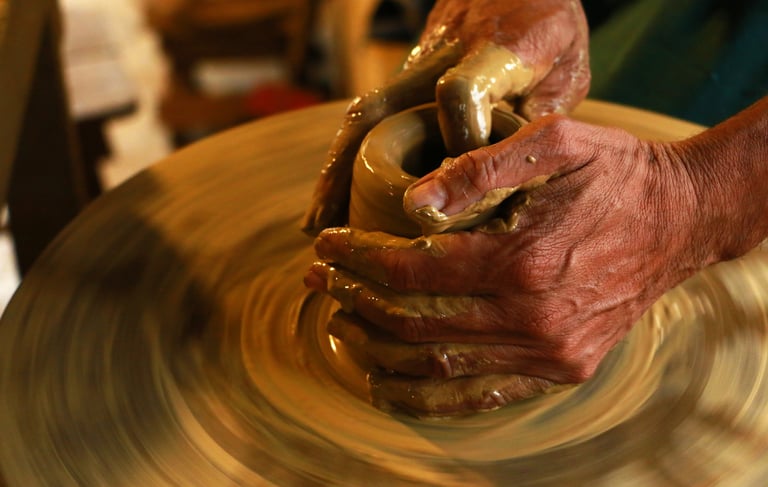

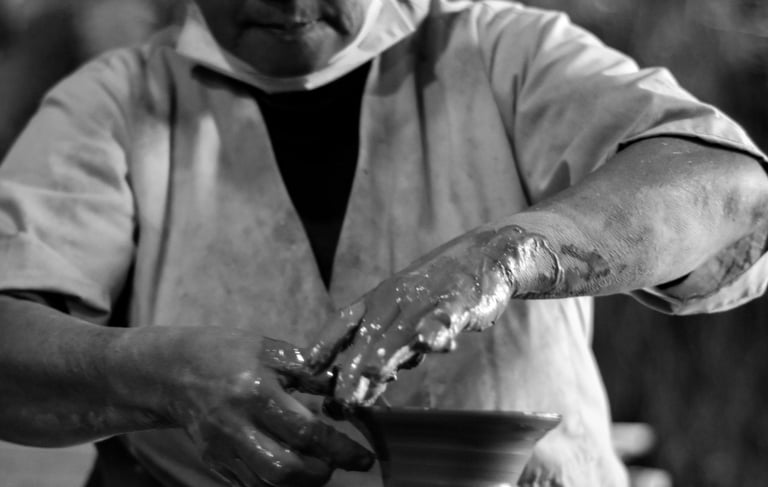

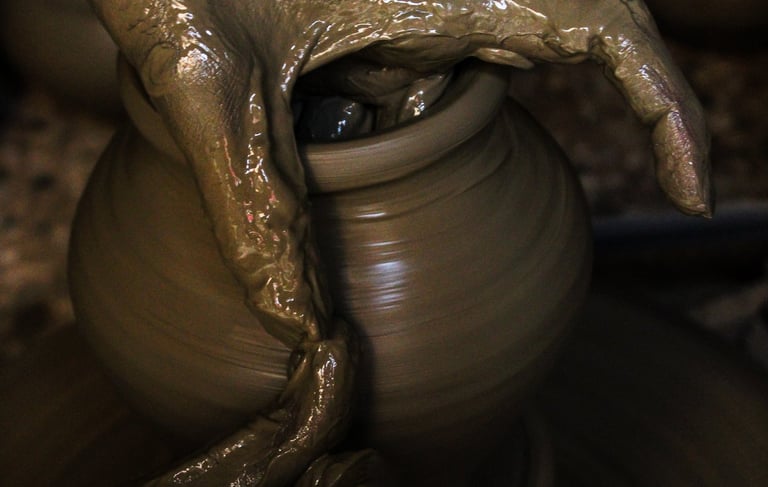

Pottery Along the Silk Road (500 CE - 1,500 CE)
The Silk Road, a network of trade routes connecting East and West, played a pivotal role in the exchange of pottery techniques and styles. Chinese, Persian, and Islamic pottery traditions flourished along these routes, influencing ceramics on a global scale.
Chinese porcelain, renowned for its delicate translucence and strength, became highly coveted. The secrets of porcelain production were closely guarded in China for centuries, contributing to its mystique. However, during the Tang Dynasty (618–907 CE), porcelain-making techniques began to disseminate along the Silk Road, ultimately revolutionizing pottery production worldwide.
Persian and Islamic pottery, characterized by intricate geometric patterns and vibrant glazes, also made significant contributions to the global ceramic repertoire. The technique of lusterware, which employed metallic oxides to create iridescent surfaces, became particularly prominent in Persian ceramics.
Renaissance and Pottery Revival (14th - 17th Century CE)
The Renaissance period witnessed a resurgence of interest in pottery and ceramics in Europe. Italian majolica, a type of tin-glazed earthenware, gained widespread popularity. Majolica pottery was characterized by its brilliant, glossy glazes and vibrant hand-painted designs. This period also saw the emergence of skilled potters like Luca della Robbia, who introduced innovative techniques in the use of glazes and clay.
The Medici family of Florence played a pivotal role in the development of pottery during the Renaissance. They established workshops and supported artists, elevating pottery from a utilitarian craft to a form of high art. The Medici's patronage fostered a flourishing community of potters and ceramicists, leaving an enduring legacy in the history of pottery.
Meanwhile, European explorers and traders brought back porcelain and ceramics from China, sparking a craze for "china" wares. The attempts to replicate Chinese porcelain led to significant advancements in European ceramics.
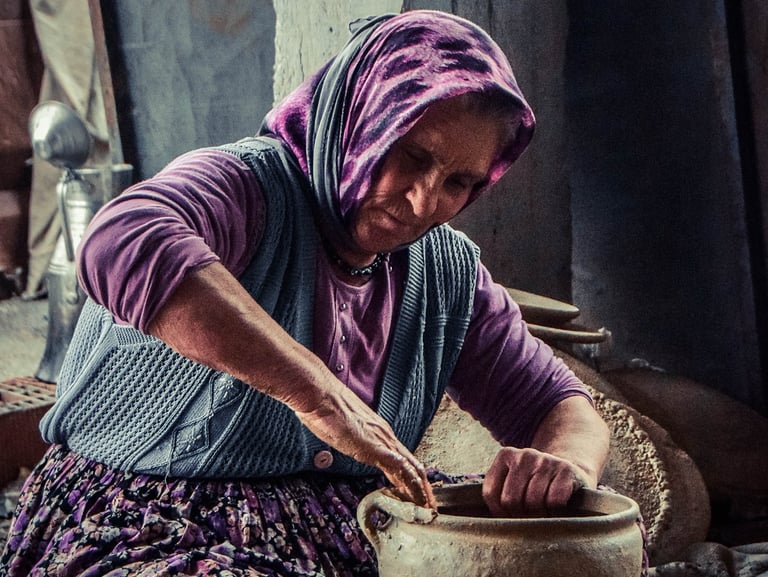

Renaissance and Pottery Revival (14th - 17th Century CE)
The Renaissance period witnessed a resurgence of interest in pottery and ceramics in Europe. Italian majolica, a type of tin-glazed earthenware, gained widespread popularity. Majolica pottery was characterized by its brilliant, glossy glazes and vibrant hand-painted designs. This period also saw the emergence of skilled potters like Luca della Robbia, who introduced innovative techniques in the use of glazes and clay.
The Medici family of Florence played a pivotal role in the development of pottery during the Renaissance. They established workshops and supported artists, elevating pottery from a utilitarian craft to a form of high art. The Medici's patronage fostered a flourishing community of potters and ceramicists, leaving an enduring legacy in the history of pottery.
Meanwhile, European explorers and traders brought back porcelain and ceramics from China, sparking a craze for "china" wares. The attempts to replicate Chinese porcelain led to significant advancements in European ceramics.
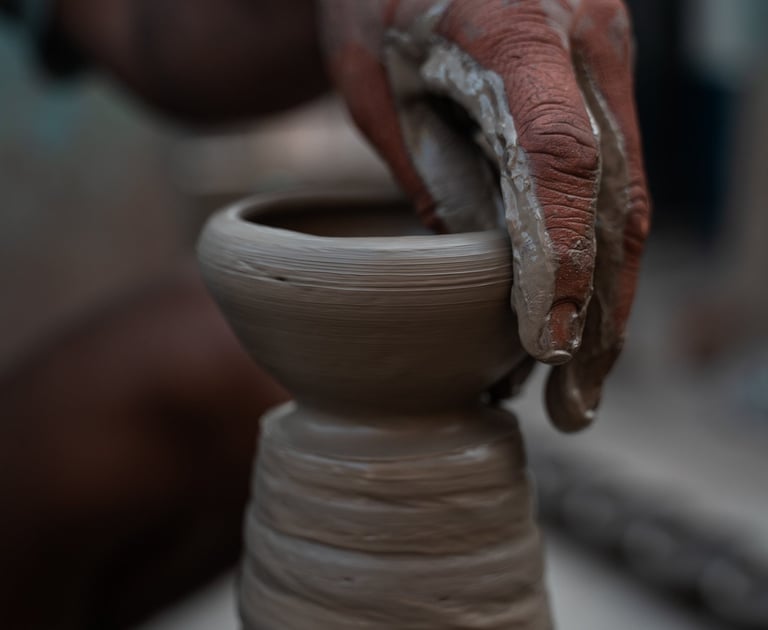

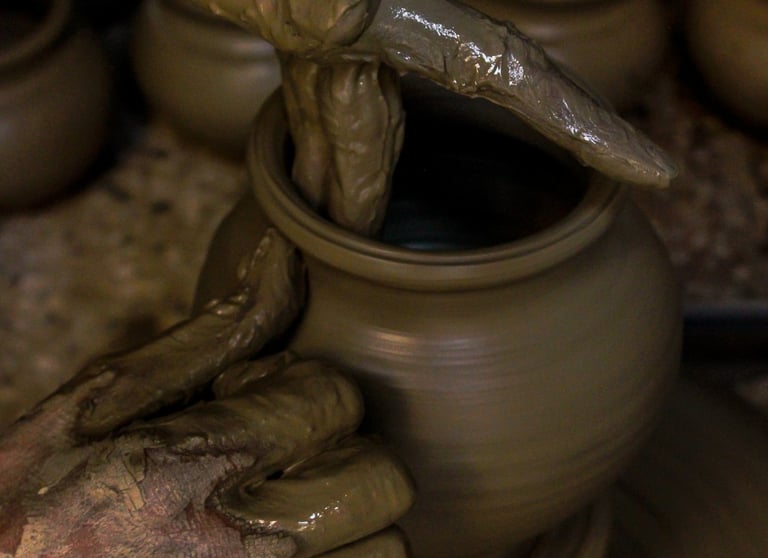

Contemporary Pottery (20th Century CE - Present)
In the 20th century, pottery took on new dimensions with the rise of studio pottery. Individual ceramic artists, such as Bernard Leach and Shoji Hamada, emphasized the importance of craftsmanship and individual expression in pottery-making. The movement sparked a renaissance in ceramics, with artists exploring diverse styles, techniques, and forms.
Advancements in technology, particularly in glazing and firing techniques, have expanded the possibilities of pottery production. Contemporary ceramic artists push boundaries, experimenting with unconventional materials and techniques, blurring the lines between art and craft.
